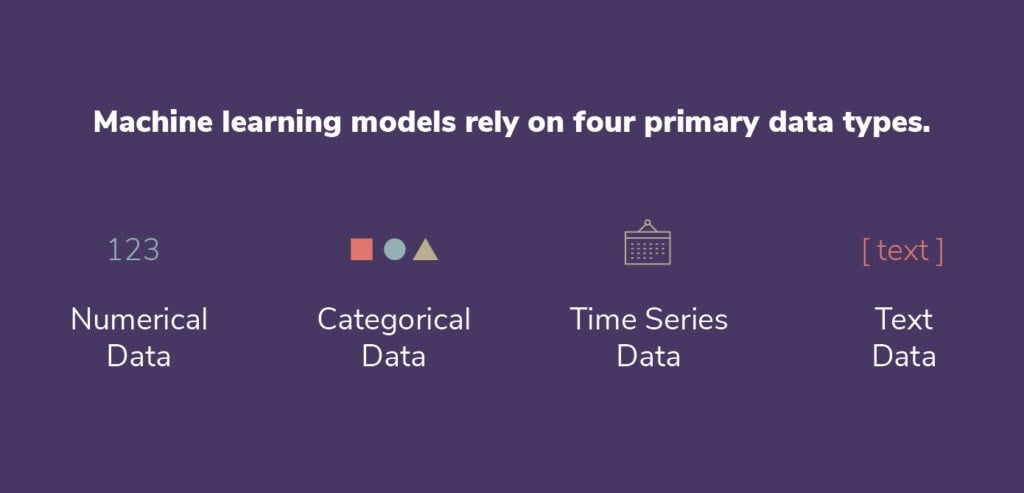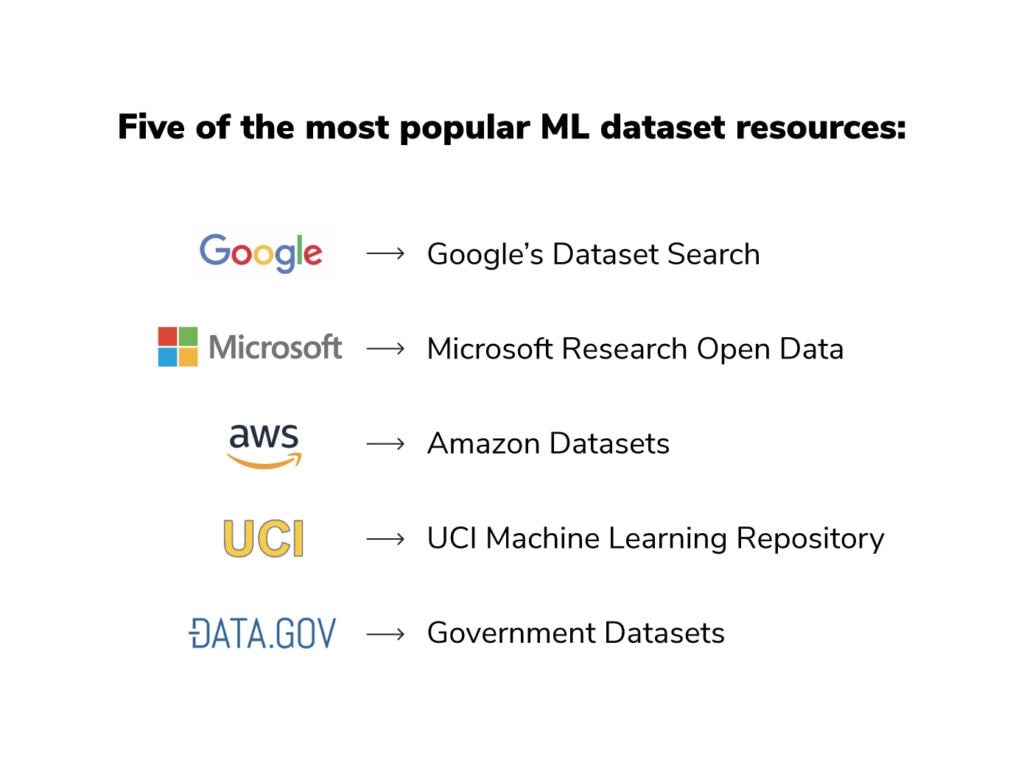This article was originally published at Algorithimia’s website. The company was acquired by DataRobot in 2021. This article may not be entirely up-to-date or refer to products and offerings no longer in existence.
Machine learning data analysis uses algorithms to continuously improve itself over time, but quality data is necessary for these models to operate efficiently.
Why is machine learning important?
Machine learning is a form of artificial intelligence (AI) that teaches computers to think in a similar way to humans: learning and improving upon past experiences. Almost any task that can be completed with a data-defined pattern or set of rules can be automated with machine learning.
So, why is machine learning important? It allows companies to transform processes that were previously only possible for humans to perform—think responding to customer service calls, bookkeeping, and reviewing resumes for everyday businesses. Machine learning can also scale to handle larger problems and technical questions—think image detection for self-driving cars, predicting natural disaster locations and timelines, and understanding the potential interaction of drugs with medical conditions before clinical trials. That’s why machine learning is important.
Why is data important for machine learning?
We’ve covered the question ‘why is machine learning important,’ now we need to understand the role data plays. Machine learning data analysis uses algorithms to continuously improve itself over time, but quality data is necessary for these models to operate efficiently.
To truly understand how machine learning works, you must also understand the data by which it operates. Today, we will be discussing what machine learning datasets are, the types of data needed for machine learning to be effective, and where engineers can find datasets to use in their own machine learning models.
What is a dataset in machine learning?
To understand what a dataset is, we must first discuss the components of a dataset. A single row of data is called an instance. Datasets are a collection of instances that all share a common attribute. Machine learning models will generally contain a few different datasets, each used to fulfill various roles in the system.
For machine learning models to understand how to perform various actions, training datasets must first be fed into the machine learning algorithm, followed by validation datasets (or testing datasets) to ensure that the model is interpreting this data accurately.
Once you feed these training and validation sets into the system, subsequent datasets can then be used to sculpt your machine learning model going forward. The more data you provide to the ML system, the faster that model can learn and improve.
What type of data does machine learning need?
Data can come in many forms, but machine learning models rely on four primary data types. These include numerical data, categorical data, time series data, and text data.

Numerical data
Numerical data, or quantitative data, is any form of measurable data such as your height, weight, or the cost of your phone bill. You can determine if a set of data is numerical by attempting to average out the numbers or sort them in ascending or descending order. Exact or whole numbers (ie. 26 students in a class) are considered discrete numbers, while those which fall into a given range (ie. 3.6 percent interest rate) are considered continuous numbers. While learning this type of data, keep in mind that numerical data is not tied to any specific point in time, they are simply raw numbers.
Categorical data
Categorical data is sorted by defining characteristics. This can include gender, social class, ethnicity, hometown, the industry you work in, or a variety of other labels. While learning this data type, keep in mind that it is non-numerical, meaning you are unable to add them together, average them out, or sort them in any chronological order. Categorical data is great for grouping individuals or ideas that share similar attributes, helping your machine learning model streamline its data analysis.
Time series data
Time series data consists of data points that are indexed at specific points in time. More often than not, this data is collected at consistent intervals. Learning and utilizing time series data makes it easy to compare data from week to week, month to month, year to year, or according to any other time-based metric you desire. The distinct difference between time series data and numerical data is that time series data has established starting and ending points, while numerical data is simply a collection of numbers that aren’t rooted in particular time periods.
Text data
Text data is simply words, sentences, or paragraphs that can provide some level of insight to your machine learning models. Since these words can be difficult for models to interpret on their own, they are most often grouped together or analyzed using various methods such as word frequency, text classification, or sentiment analysis.
Where do engineers get datasets for machine learning?
There is an abundance of places you can find machine learning data, but we have compiled five of the most popular ML dataset resources to help get you started:

Google’s Dataset Search
Google released their Google Dataset Search Engine in September 2018. Use this tool to view datasets across a wide array of topics such as global temperatures, housing market information, or anything else that peaks your interest. Once you enter your search, several applicable datasets will appear on the left side of your screen. Information will be included about each dataset’s date of publication, a description of the data, and a link to the data source. This is a popular ML dataset resource that can help you find unique machine learning data.
Microsoft Research Open Data
Microsoft is another technological leader who has created a database of free, curated datasets in the form of Microsoft Research Open Data. These datasets are available to the public and are used to “advance state-of-the-art research in areas such as natural language processing, computer vision, and domain specific sciences.” Download datasets from published research studies or copy them directly to a cloud-based Data Science Virtual Machine to enjoy reputable machine learning data.
Amazon datasets
Amazon Web Services (AWS) has grown to be one of the largest on-demand cloud computing platforms in the world. With so much data being stored on Amazon’s servers, a plethora of datasets have been made available to the public through AWS resources. These datasets are compiled into Amazon’s Registry of Open Data on AWS. Looking up datasets is straightforward, with a search function, dataset descriptions, and usage examples provided. This is one of the most popular ways to extract machine learning data.
UCI Machine Learning Repository
The University of California, School of Information and Computer Science, provides a large amount of information to the public through its UCI Machine Learning Repository database. This database is prime for machine learning data as it includes nearly 500 datasets, domain theories, and data generators which are used for “the empirical analysis of machine learning algorithms.” Not only does this make searching easy, but UCI also classifies each dataset by the type of machine learning problem, simplifying the process even further.
Government datasets
The United States Government has released several datasets for public use. As another great avenue for machine learning data, these datasets can be used for conducting research, creating data visualizations, developing web/mobile applications, and more. The US Government database can be found at Data.gov and contains information pertaining to industries such as education, ecosystems, agriculture, and public safety, among others. Many countries offer similar databases and most are fairly easy to find.
Why is machine learning popular?
Machine learning is a booming technology because it benefits every type of business across every industry. The applications are limitless. From healthcare to financial services, transportation to cyber security, and marketing to government, machine learning can help every type of business adapt and move forward in an agile manner.
You might be good at sifting through a massive organized spreadsheet and identifying a pattern, but thanks to machine learning and artificial intelligence, algorithms can examine much larger datasets and understand connective patterns even faster than any human, or any human-created spreadsheet function, ever could. Machine learning allows businesses to collect insights quickly and efficiently, speeding the time to business value. That’s why machine learning is important for every organization.
Machine learning also takes the guesswork out of decisions. While you may be able to make assumptions based on data averages from spreadsheets or databases, machine learning algorithms can analyze massive volumes of data to provide exhaustive insights from a comprehensive picture. Put shortly: machine learning allows for higher accuracy outputs across an ever growing amount of inputs.
Related posts
See other posts in AI for PractitionersAI adoption in supply chains isn’t about chasing trends. Learn the strategic framework that’s helping leaders build real, lasting impact. Read the full post.
Learn how to build and scale agentic AI with NVIDIA and DataRobot. Streamline development, optimize workflows, and deploy AI faster with a production-ready AI stack.
What is an AI gateway? And why does your enterprise need one? Discover how it keeps Agentic AI scalable, secure, and cost-efficient. Read the full blog.
Related posts
See other posts in AI for PractitionersGet Started Today.